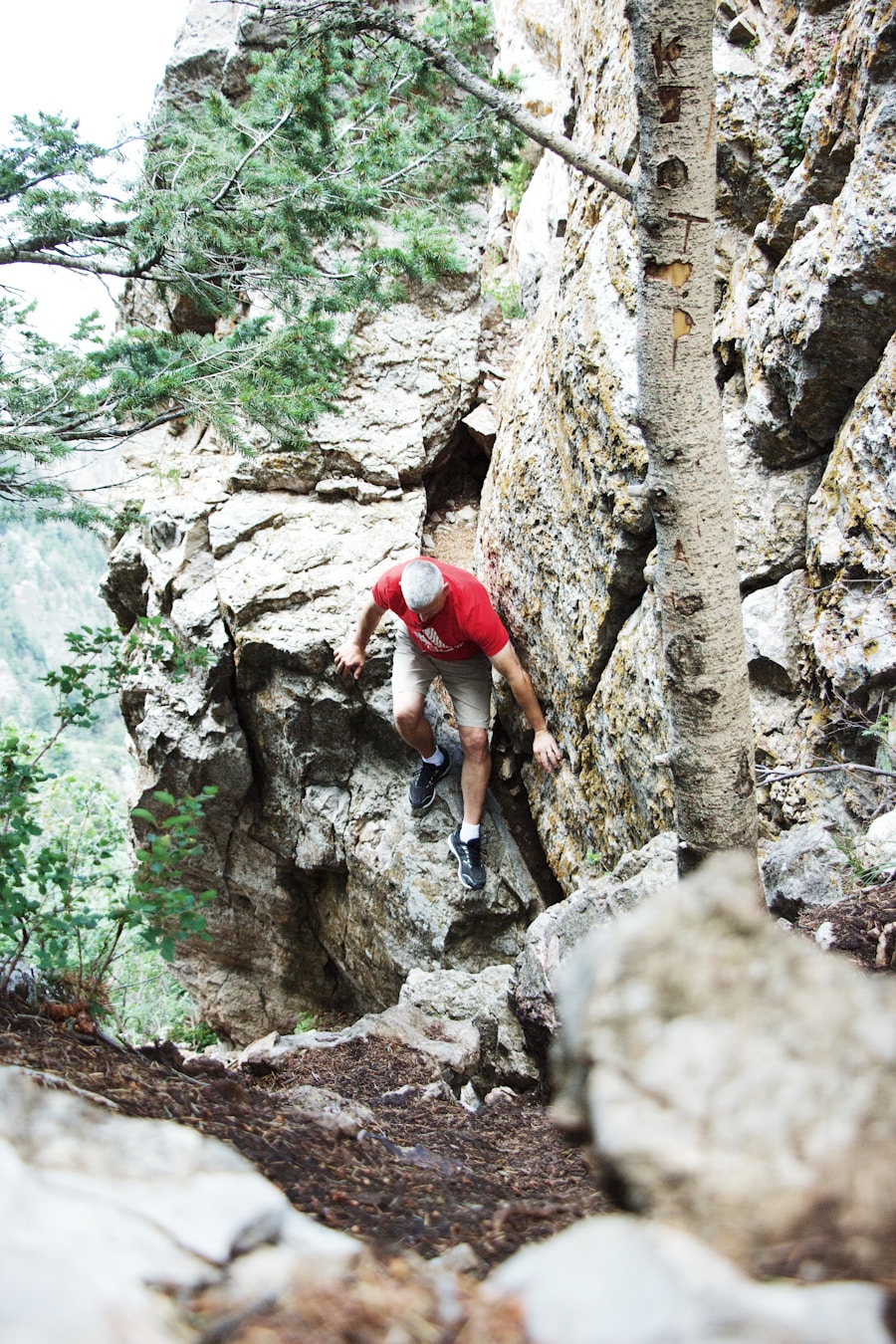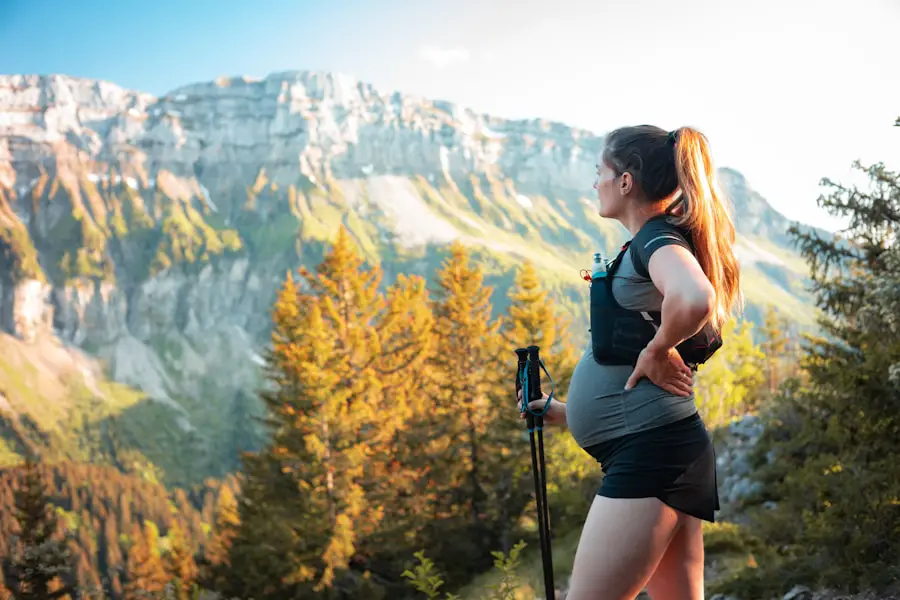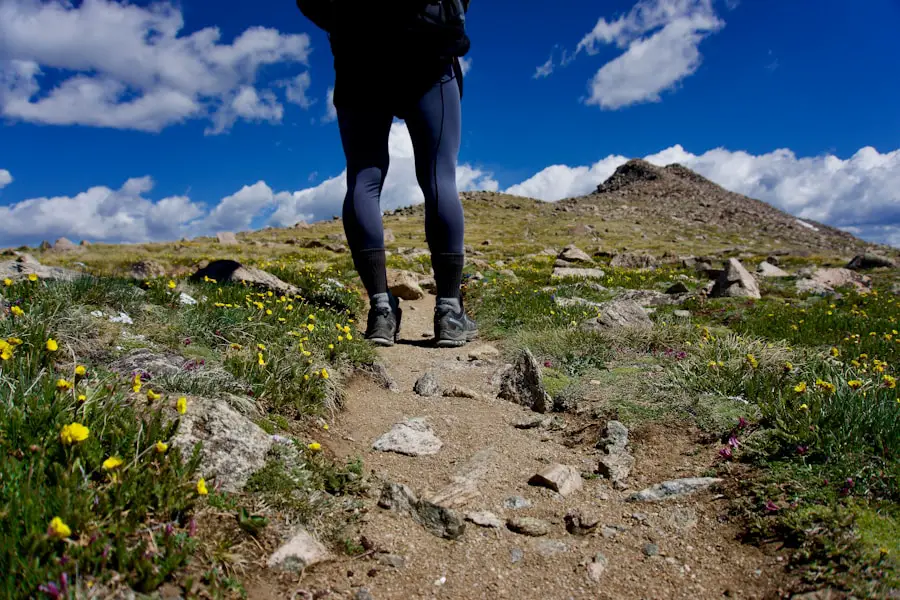Hiking is an exceptional way to enhance lower body strength, engaging a variety of muscle groups that contribute to overall fitness. The act of walking on uneven terrain requires the use of stabilizing muscles, which are often neglected in traditional gym workouts. As hikers ascend hills or navigate rocky paths, they activate their quadriceps, hamstrings, calves, and glutes.
This multi-dimensional engagement not only builds strength but also improves muscle endurance, allowing individuals to hike longer distances with greater ease. The resistance provided by the natural landscape—such as inclines, declines, and varying surfaces—adds an element of challenge that can lead to significant strength gains over time. Moreover, hiking promotes functional strength, which is the ability to perform everyday activities with ease.
The movements involved in hiking mimic those required in daily life, such as climbing stairs or walking on uneven surfaces. This functional aspect of strength training is particularly beneficial for older adults, as it can enhance balance and stability, reducing the risk of falls. Additionally, the cardiovascular benefits of hiking cannot be overlooked; as hikers engage their lower body muscles, they also elevate their heart rate, contributing to improved cardiovascular health.
This dual benefit of strength and endurance makes hiking a comprehensive workout for the lower body.
Key Takeaways
- Hiking strengthens lower body muscles such as quadriceps, hamstrings, glutes, and calves, leading to improved stability and balance.
- Trails with varied terrain, inclines, and declines provide an effective lower body workout during hiking.
- To maximize lower body workout during a hiking trip, incorporate uphill and downhill sections, use trekking poles, and carry a weighted backpack.
- Proper footwear with good ankle support and traction is essential for preventing injuries and providing stability during hiking.
- Hiking techniques such as lunging uphill, power hiking, and using proper form while descending can target lower body muscles effectively.
The Best Hiking Trails for Lower Body Workout
When it comes to selecting hiking trails that effectively target lower body strength, certain characteristics make some trails more advantageous than others. Trails with significant elevation changes are particularly beneficial, as they require more effort from the leg muscles. For instance, the Appalachian Trail offers numerous segments with steep inclines that challenge even seasoned hikers.
The White Mountains in New Hampshire feature trails like Mount Washington, where the steep ascent engages the quadriceps and glutes intensely. These types of trails not only build strength but also improve cardiovascular fitness due to the increased effort required. In addition to elevation, trails that incorporate varied terrain can enhance lower body workouts.
Trails with rocky paths, roots, and loose gravel require constant adjustments in footing and balance, engaging stabilizing muscles in the ankles and legs. The Pacific Crest Trail, stretching from California to Canada, offers diverse landscapes that include rocky outcrops and sandy stretches. Hiking in such environments forces the body to adapt and strengthen as it navigates through different challenges.
Furthermore, trails that include stairs or ladders—like those found in national parks such as Zion—provide an excellent opportunity for targeted strength training in the lower body.
How to Prepare for a Hiking Trip to Maximize Lower Body Workout

Preparation is key to maximizing the benefits of a hiking trip focused on lower body strength. Before embarking on a hike, it is essential to assess your fitness level and choose a trail that aligns with your capabilities while still providing a challenge. Gradually increasing the difficulty of your hikes can help build strength over time without risking injury.
Incorporating strength training exercises into your routine prior to hitting the trails can also be beneficial. Exercises such as squats, lunges, and step-ups can prepare your muscles for the demands of hiking. In addition to physical preparation, proper nutrition plays a crucial role in ensuring you have the energy needed for a vigorous hike.
Consuming a balanced meal rich in carbohydrates and protein before your hike can provide sustained energy levels. Hydration is equally important; drinking water before and during your hike helps maintain muscle function and prevents fatigue. Packing nutritious snacks like trail mix or energy bars can also help replenish energy during breaks.
By preparing both physically and nutritionally, hikers can optimize their performance and enhance their lower body workout experience.
The Importance of Proper Footwear for Hiking
| Benefits of Proper Footwear for Hiking | Statistics |
|---|---|
| Reduced Risk of Injury | According to a study published in the Wilderness & Environmental Medicine journal, proper hiking footwear can reduce the risk of ankle injuries by 25%. |
| Improved Stability | A survey conducted by the American Hiking Society found that 90% of hikers reported improved stability and balance when wearing proper hiking shoes or boots. |
| Enhanced Comfort | Research from the Journal of Sports Sciences indicates that hikers wearing proper footwear experience less foot fatigue and discomfort during long hikes. |
| Protection from Elements | According to the Appalachian Trail Conservancy, proper hiking footwear provides better protection from sharp rocks, mud, and water, reducing the risk of foot-related issues. |
The right footwear is paramount when it comes to hiking effectively and safely while targeting lower body strength. Hiking boots or shoes should provide adequate support and cushioning to protect the feet from impact and prevent injuries. A well-fitted boot will stabilize the ankle and reduce the risk of sprains on uneven terrain.
For instance, boots with a high ankle design offer additional support for those tackling steep trails or rocky paths, ensuring that hikers can focus on their workout without worrying about foot stability. Moreover, the traction provided by hiking footwear is crucial for maintaining grip on various surfaces. Shoes with deep lugs are designed to grip loose soil or rocky terrain effectively, allowing hikers to ascend and descend slopes confidently.
This grip not only enhances safety but also allows for more aggressive movements that engage the lower body muscles more intensely. Additionally, breathable materials in hiking footwear can help regulate temperature and moisture, keeping feet comfortable during long hikes. Investing in quality footwear tailored for hiking can significantly enhance both performance and enjoyment on the trails.
Hiking Techniques to Target Lower Body Muscles
To maximize lower body engagement during hikes, employing specific techniques can make a substantial difference. One effective method is to focus on your stride length and cadence. Taking longer strides while ascending hills can activate the glutes and hamstrings more effectively than shorter strides.
Conversely, when descending, shorter strides can help maintain control and reduce impact on the knees while still engaging the quadriceps. Adjusting your pace according to the terrain—slowing down on steep inclines or speeding up on flat sections—can also help target different muscle groups throughout your hike. Incorporating interval training into your hiking routine can further enhance lower body strength.
This involves alternating between periods of high intensity—such as sprinting up a hill—and recovery periods at a slower pace. This technique not only builds strength but also improves cardiovascular fitness and endurance. Additionally, using trekking poles can provide extra support while engaging the upper body; however, they also allow for greater focus on leg movements by distributing weight more evenly across the body.
By consciously applying these techniques during hikes, individuals can significantly enhance their lower body workout.
How to Prevent Injuries While Hiking

Injuries are a common concern for hikers, particularly when engaging in strenuous activities aimed at building lower body strength. To minimize the risk of injury, it is essential to listen to your body and recognize signs of fatigue or discomfort early on. Gradually increasing the intensity and duration of hikes allows muscles to adapt without overexertion.
Stretching before and after hikes can also help maintain flexibility and prevent strains or sprains. Proper warm-up routines are crucial before hitting the trails; dynamic stretches targeting the legs—such as leg swings or walking lunges—can prepare muscles for activity. Additionally, maintaining good hydration levels throughout your hike helps prevent cramps and fatigue.
Wearing appropriate gear that fits well and provides adequate support is another key factor in injury prevention. Finally, being mindful of your surroundings—watching for loose rocks or slippery surfaces—can help avoid falls that may lead to injuries.
Incorporating Hiking into Your Lower Body Workout Routine
Integrating hiking into a regular lower body workout routine can provide variety and excitement while enhancing overall fitness levels. For those who typically engage in gym workouts focused on leg strength, substituting one or two sessions per week with hiking can offer a refreshing change of pace while still delivering effective results. Planning hikes that include challenging terrains or steep inclines can mimic traditional strength training exercises while providing additional cardiovascular benefits.
To create a balanced routine, consider combining hiking with other forms of exercise such as cycling or swimming on alternate days.
This cross-training approach not only prevents boredom but also reduces the risk of overuse injuries by varying muscle engagement across different activities. Tracking progress through apps or fitness devices can help maintain motivation and set goals for distance or elevation gain during hikes.By incorporating hiking into a broader fitness regimen, individuals can enjoy enhanced lower body strength while experiencing the mental benefits of being outdoors.
The Mental and Emotional Benefits of Hiking for Lower Body Strength
Beyond physical advantages, hiking offers significant mental and emotional benefits that complement its role in building lower body strength. Engaging with nature has been shown to reduce stress levels and improve mood; studies indicate that spending time outdoors can lead to decreased anxiety and depression symptoms. The rhythmic nature of walking combined with natural surroundings creates a meditative experience that allows individuals to clear their minds while focusing on their physical exertion.
Additionally, achieving personal goals during hikes—such as reaching a summit or completing a challenging trail—can foster a sense of accomplishment and boost self-esteem. This psychological uplift is particularly beneficial when combined with physical challenges like those found in hiking; overcoming obstacles not only strengthens muscles but also fortifies mental resilience. The social aspect of hiking with friends or family can further enhance emotional well-being by fostering connections and shared experiences in nature.
Ultimately, hiking serves as a holistic approach to fitness that nurtures both body and mind while effectively targeting lower body strength.
Hiking is such a complete lower body workout because it engages various muscle groups, including the glutes, quads, hamstrings, and calves. In fact, a study published in the Journal of Strength and Conditioning Research found that hiking uphill can increase muscle activation in the lower body by up to 60%. This means that hiking not only helps to improve cardiovascular fitness but also strengthens and tones the muscles in your legs and butt. So next time you hit the trails, remember that you’re not just enjoying nature – you’re also giving your lower body a killer workout.
FAQs
What muscles are worked during hiking?
Hiking works the muscles in the lower body, including the quadriceps, hamstrings, glutes, and calves. It also engages the core muscles for stability and balance.
How does hiking benefit the lower body?
Hiking helps to strengthen and tone the muscles in the lower body, leading to improved endurance, stability, and overall lower body strength. It also helps to improve flexibility and joint mobility.
Is hiking a good cardiovascular workout?
Yes, hiking is a good cardiovascular workout as it elevates the heart rate and improves cardiovascular endurance. It also helps to improve lung capacity and overall cardiovascular health.
Can hiking help with weight loss?
Hiking can contribute to weight loss as it is a form of aerobic exercise that burns calories and helps to increase metabolism. Combined with a healthy diet, hiking can be an effective way to support weight loss goals.
How does hiking compare to other lower body workouts?
Hiking offers a unique combination of cardiovascular exercise, lower body strength training, and outdoor exploration. It engages multiple muscle groups and provides a full-body workout, making it a comprehensive lower body workout option.
